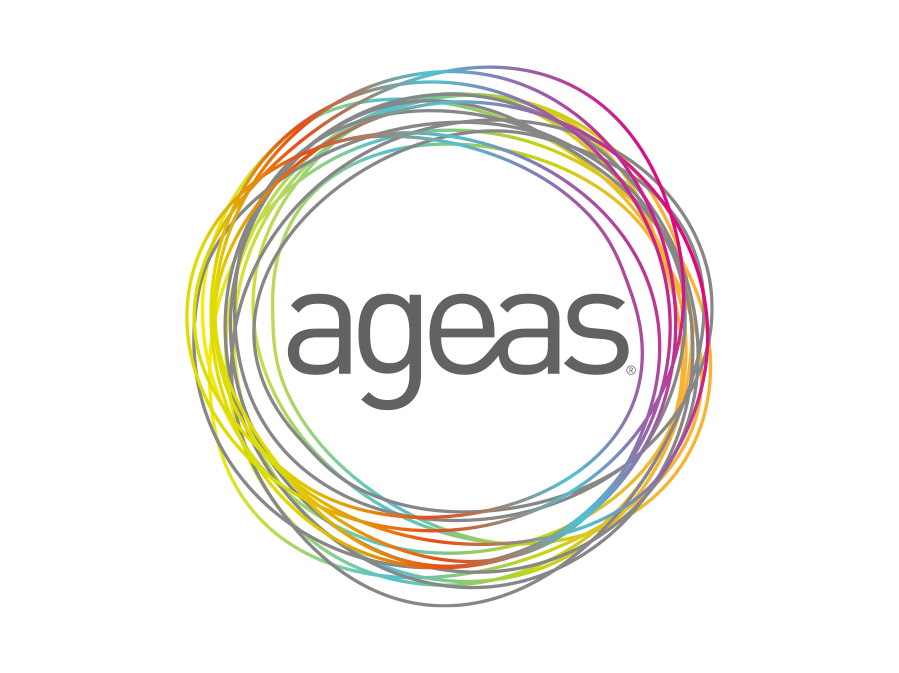Anti-Fragile Life Blueprint

Beyond the Vision Board: How to Engineer an Anti-Fragile Life and Future-Proof Your Personal Growth Journey. In a world where health projections for 2025 warn that nearly 1 in 2 people in the UK will face a cancer diagnosis in their lifetime according to Macmillan, discover the empowering truth: your path to self-improvement doesn't stop when life throws a curveball. Learn how strategic protections like Family Income Benefit, Income Protection, and Critical Illness Cover create an invisible financial safety net, safeguarding your ability to recover and continue investing in yourself. Explore how tailored Personal Sick Pay for demanding roles like tradespeople, nurses, and electricians, ensures your income security, while comprehensive Life Protection and Gift Inter Vivos secure your legacy. Uncover how private health insurance unlocks immediate access to specialized medical care, dramatically accelerating recovery and empowering you to reclaim your vitality faster, transforming potential crises into catalysts for unprecedented resilience and sustained personal development.
In our relentless pursuit of self-improvement, we meticulously craft vision boards, set ambitious goals, and dedicate ourselves to becoming the best versions of ourselves. We invest in courses, gym memberships, and healthy eating plans. Yet, we often overlook a fundamental truth: a plan is only as strong as its ability to withstand pressure. True growth isn't just about moving forward in good times; it's about having the resilience to continue when faced with adversity.
The concept of being "anti-fragile," popularised by the author Nassim Nicholas Taleb, goes beyond mere resilience. The resilient person withstands a shock and stays the same; the anti-fragile person withstands a shock and becomes stronger. Imagine engineering your life so that setbacks, particularly health crises, don't just derail you but can, with the right support structure, become periods of profound reflection, recovery, and renewed focus.
This isn't wishful thinking. This is strategic life design. By building a robust financial and wellness foundation, you create the space to heal without the crushing weight of financial worry. You ensure that a diagnosis or an accident doesn't spell the end of your ambitions, but instead marks a new chapter in your personal growth story. This guide is your blueprint for building that anti-fragile future.
The Modern Dilemma: When Idealism Meets Reality
We live in an age of unprecedented personal development. The "hustle culture" narrative tells us that with enough willpower, we can achieve anything. While inspiring, this overlooks the unpredictable nature of life. The stark reality is that our health is often our most valuable, and most vulnerable, asset.
Consider the landscape in the UK today:
- The Shadow of Serious Illness: Macmillan Cancer Support projects that by 2025, nearly one in two people will get cancer in their lifetime. This isn't a distant statistic; it's a reality that will touch almost every family in the country.
- The Rise of Long-Term Sickness: The Office for National statistics (ONS) reported in early 2024 that a record 2.8 million people are out of work due to long-term sickness. This highlights a growing crisis of conditions that, while not always life-threatening, can be life-altering and career-ending without the right support.
- The Financial Fallout: A serious illness often brings a double-edged financial sword. Your ability to earn an income may plummet, while your expenses can soar due to travel for treatment, home modifications, or private care. Research from insurers consistently shows that the average UK family has enough savings to last just a few weeks if their primary income disappears.
A vision board is a powerful tool for motivation, but it offers no protection when you're unable to work for six months. Your ambition to climb the career ladder is commendable, but it provides no income if you're recovering from a heart attack. This is the point where a fragile plan shatters. An anti-fragile plan, however, has a built-in shock absorber.
The Four Pillars of an Anti-Fragile Life
Engineering an anti-fragile life isn't about one single action but about building a multi-layered support system. We can break this down into four essential pillars that work in harmony to protect your present and future-proof your growth.
Pillar 1: Proactive Health & Foundational Wellness
The first line of defence is always prevention and proactive self-care. Building a strong physical and mental foundation makes you less susceptible to illness and better equipped to recover when challenges arise.
- Intelligent Nutrition: This is about more than just calories. It's about fuelling your body with nutrient-dense foods that reduce inflammation, support your immune system, and boost cognitive function. A diet rich in fruits, vegetables, lean proteins, and healthy fats is paramount. At WeCovr, we believe so strongly in this that we provide our customers with complimentary access to our AI-powered calorie and nutrition tracking app, CalorieHero. It's a small way we can help you build this foundational pillar of health.
- Consistent Movement: The NHS recommends at least 150 minutes of moderate-intensity activity a week. This isn't just for weight management. Regular exercise is proven to reduce the risk of major illnesses, such as coronary heart disease, stroke, type 2 diabetes, and cancer, and lowers your risk of early death by up to 30%.
- Prioritising Sleep: Sleep is not a luxury; it is a non-negotiable biological necessity. During sleep, your body repairs cells, consolidates memories, and flushes toxins from the brain. Consistently poor sleep is linked to a host of health problems, including a weakened immune system and increased risk of chronic disease.
- Mental and Emotional Hygiene: Stress is an unavoidable part of modern life, but chronic stress is a killer. Practices like mindfulness, meditation, spending time in nature, and nurturing strong social connections are critical for managing your body's stress response and building mental resilience.
Pillar 2: The Financial Safety Net – Your Invisible Armour
This is the game-changer. This is where you transform financial anxiety into a fortified sense of security. Protection insurance isn't a cost; it's an investment in your peace of mind and your uninterrupted ability to pursue your goals. It's the financial scaffolding that holds everything up while you focus on recovery.
Let's demystify the core components:
Income Protection Insurance
Often called the bedrock of any financial plan, Income Protection is designed to do one thing: replace a significant portion of your monthly income if you are unable to work due to any illness or injury.
- How it works: It pays out a regular, tax-free monthly sum (typically 50-70% of your gross salary) until you can return to work, reach retirement age, or the policy term ends.
- Why it's anti-fragile: It covers almost any medical reason for being off work, from a broken leg or severe back pain to mental health conditions like burnout and depression, or serious illnesses like cancer. It ensures your rent or mortgage, bills, and food costs are covered, removing the primary source of stress during a health crisis. This allows you to recover properly, without feeling pressured to return to work before you are ready.
Critical Illness Cover
While Income Protection covers your monthly outgoings, Critical Illness Cover is designed to deal with the immediate financial shock of a life-changing diagnosis.
- How it works: It pays out a one-off, tax-free lump sum upon the diagnosis of a specific, serious illness listed in the policy. The number and type of conditions covered vary between insurers but typically include most cancers, heart attacks, and strokes.
- Why it's anti-fragile: This lump sum gives you options and control. You could use it to:
- Clear or reduce your mortgage, drastically lowering your monthly bills.
- Pay for private treatment or specialist therapies not available on the NHS.
- Adapt your home for new mobility needs.
- Allow a partner to take time off work to support you.
- Simply provide a financial cushion to remove all money worries during a difficult time.
Life Protection (Life Insurance)
This policy protects your loved ones from the financial consequences of your death. It's the ultimate act of ensuring the plans you made for your family can continue, even if you're not there.
- How it works: It pays out a lump sum to your beneficiaries when you die. The two main types are:
- Term Insurance: Covers you for a fixed period (e.g., the length of your mortgage).
- Whole of Life: Covers you for your entire life and is guaranteed to pay out.
- Why it's anti-fragile: It creates a legacy of security. The payout can clear debts, provide for children's education, and ensure your surviving partner and family can maintain their standard of living without financial hardship.
Family Income Benefit
This is a clever and often more manageable alternative to a traditional lump-sum life insurance policy.
- How it works: Instead of a single large payout, it provides your family with a regular, tax-free monthly or annual income from the time of your death until the end of the policy term.
- Why it's anti-fragile: It mirrors a salary, making it much easier for a grieving family to budget and manage their finances. It prevents the overwhelming responsibility of investing a large lump sum while dealing with a loss.
Here's a simple table to compare these core protection products:
| Product | What it Does | Payout Type | Primary Purpose |
|---|---|---|---|
| Income Protection | Replaces your monthly income if you can't work due to illness/injury. | Regular Monthly Income | Cover ongoing bills & living costs. |
| Critical Illness Cover | Pays out if you are diagnosed with a specified serious illness. | Tax-Free Lump Sum | Handle immediate financial impact of illness. |
| Life Protection | Pays out to your beneficiaries upon your death. | Tax-Free Lump Sum | Clear debts & provide for dependents. |
| Family Income Benefit | Provides a regular income for your family after your death. | Regular Monthly Income | Replace your salary for your family's budget. |
Tailored Defences for a Diverse Workforce
The one-size-fits-all approach is obsolete. The modern economy is a rich tapestry of different working styles, each with unique vulnerabilities and needs. An anti-fragile plan must be tailored to your specific circumstances.
For the Self-Employed, Freelancers, and Contractors
You are the backbone of the UK's flexible economy, but you operate without a safety net. You have no statutory sick pay, no employer pension contributions, and no death-in-service benefits. This makes you uniquely vulnerable.
- Income Protection is Non-Negotiable: For you, this isn't an option; it's an essential business overhead, as critical as your laptop or your tools. It becomes your personal sick pay scheme, ensuring a single illness doesn't bankrupt you and your business.
- Critical Illness Cover as a Business Lifeline: A lump sum from a critical illness policy can be the capital injection that keeps your business afloat. It can allow you to hire a temporary replacement or cover fixed business costs while you step back and focus entirely on your health.
For Company Directors and Business Owners
You carry the weight of your own financial future and that of your employees. Protecting the business is synonymous with protecting yourself and your family.
- Key Person Insurance: Is there a director, a top salesperson, or a technical genius whose sudden absence due to death or critical illness would devastate the company's profits or stability? Key Person Insurance protects against this. The policy is owned by the business, and the payout provides the capital needed to manage the disruption, recruit a replacement, and reassure lenders and investors.
- Executive Income Protection: This is a way for a limited company to pay for a director's personal income protection policy. It's a highly tax-efficient benefit, as the premiums are typically treated as a legitimate business expense, making it more cost-effective than a personal plan.
- Relevant Life Cover: A tax-efficient alternative to a traditional "death-in-service" scheme, perfect for small businesses. It allows a company to provide a significant life insurance benefit to an employee (including a director) with premiums that are tax-deductible and not treated as a P11D benefit.
| Business Protection | Who it Protects | What it Covers | Key Benefit for the Business |
|---|---|---|---|
| Key Person Insurance | The Business | Financial loss from death/critical illness of a key employee. | Provides capital to stabilise the business. |
| Executive Income Protection | The Director/Employee | The individual's income if they can't work. | Premiums are a tax-efficient business expense. |
| Relevant Life Cover | The Employee's Family | Provides a lump sum on the employee's death. | Tax-efficient death-in-service benefit. |
For Tradespeople and Those in Physically Demanding Roles
If you're an electrician, a plumber, a nurse, or a construction worker, your body is your primary tool. A physical injury that might be an inconvenience for an office worker could be a career-ender for you.
- Personal Sick Pay Insurance: This is often a great starting point. These policies are a form of short-term income protection, typically paying out for up to 1 or 2 years. They often have shorter deferred periods (the time you have to be off work before the policy pays out), meaning they can kick in after just one week. This is perfect for covering the immediate financial gap from an accident or short-term injury.
- Robust Income Protection: For more serious issues, a comprehensive long-term income protection policy is still vital. It's crucial to ensure the policy's definition of "incapacity" is suitable for your role. An "own occupation" definition is the gold standard, as it means the policy will pay out if you are unable to do your specific job, not just any job.
Accelerating Recovery: The Strategic Power of Private Medical Insurance (PMI)
Building an anti-fragile life isn't just about financial survival; it's about bouncing back stronger and faster. This is where Private Medical Insurance (PMI) plays a pivotal role, acting as an accelerant for your recovery.
While we are incredibly fortunate to have the NHS, the system is under unprecedented strain. ONS data from 2024 shows extensive waiting lists for diagnostics and treatments. Waiting months for a scan, a consultation, or an operation can be a period of immense pain, anxiety, and uncertainty, during which your condition could worsen.
PMI transforms this waiting game into proactive action. Its benefits are profound:
- Speed of Access: Get a diagnosis and see a specialist in days or weeks, not months or years. This speed can be crucial for conditions where early intervention dramatically improves outcomes.
- Choice and Control: You can choose your specialist, your hospital, and the timing of your treatment, fitting your recovery around your life, not the other way around.
- Access to Advanced Treatments: PMI can provide access to new drugs, therapies, or surgical techniques that may not yet be available through the NHS due to cost or NICE approval processes.
- A Healing Environment: Recovering in a private, en-suite room can significantly reduce stress and the risk of hospital-acquired infections, contributing to a faster and more comfortable recuperation.
From an anti-fragile perspective, PMI minimises the disruption to your life. It shortens the period of uncertainty and inactivity, allowing you to get back to your family, your work, and your personal growth journey far quicker. When combined with protection policies, it creates a truly holistic shield. Your income is protected while you're off, and your recovery is fast-tracked.
Securing Your Legacy: Building Anti-Fragility Beyond Your Lifetime
The final piece of the blueprint extends beyond your own needs to secure the future for those you love and protect the wealth you've built.
Gift Inter Vivos: Shielding Your Gifts from Inheritance Tax
Generosity should not come with a hidden tax bill. Under UK law, if you give away a significant asset (like cash for a house deposit or property) and die within seven years, that gift may be subject to Inheritance Tax (IHT). This can create an unexpected and substantial tax liability for the recipient.
- How Gift Inter Vivos Insurance works: It is a specialised life insurance policy, also known as IHT Gift Insurance. You take out a policy for a term of seven years to cover the potential tax liability on the gift. If you pass away during this period, the policy pays out to cover the IHT bill, ensuring your loved one receives the full value of your gift.
- Why it's anti-fragile: It removes the 7-year gamble. It provides certainty and protects your legacy, ensuring your act of generosity doesn't become a financial burden for your family.
Life Protection as a Legacy Tool
Beyond its primary role of clearing debts, life insurance can be a powerful tool for intentional legacy planning. A well-structured policy can:
- Fund your grandchildren's university education.
- Leave a significant donation to a charity close to your heart.
- Provide the seed capital for a child's future business venture.
- Equalise an estate between children, especially if one has received more help during your lifetime.
This transforms life insurance from a simple safety net into a proactive tool for shaping the future and extending your positive impact for generations.
Your Blueprint in Action: A Step-by-Step Guide
Feeling empowered? Here’s how to translate this knowledge into a tangible plan.
Step 1: Conduct a Personal Audit Be honest with yourself. What is your current state of health? What savings do you have? What cover, if any, do you have through your employer? What are your key financial commitments (mortgage, rent, loans, school fees)?
Step 2: Define Your "Why" What and who are you protecting? Is your primary concern protecting your income so you can maintain your independence? Is it ensuring your partner and children are secure? Is it safeguarding your business? Your "why" will determine your priorities.
Step 3: Quantify Your Needs This doesn't need to be complex.
- For Income Protection: Calculate your essential monthly outgoings. This is the minimum income you'd need to replace.
- For Life/Critical Illness Cover: Add up your mortgage, other large debts, and an amount you'd want to leave for your family's living expenses (e.g., 5-10 times your annual salary).
Step 4: Explore Your Options with Expert Guidance The UK insurance market is vast and complex. Policies, definitions, and prices vary enormously between providers. This is not a journey to take alone. Using an independent broker like WeCovr is invaluable. We can scan the entire market, comparing policies from all the major UK insurers to find the cover that truly fits your unique needs and budget. We translate the jargon and ensure there are no hidden clauses that could trip you up when you need the policy most.
Step 5: Review and Adapt Your anti-fragile blueprint is a living document, not a one-time setup. Review your cover every few years, or after any major life event:
- Getting married or entering a civil partnership
- Having children
- Taking on a larger mortgage
- Starting a business
- Getting a significant pay rise
By regularly reviewing your plan, you ensure it remains perfectly aligned with your life, providing robust protection every step of the way. Building an anti-fragile life is the ultimate act of self-care and empowerment. It's the conscious decision to build a fortress of security around your ambitions, giving you the freedom to grow, adapt, and thrive, no matter what curveballs life throws your way.
Isn't this kind of insurance really expensive?
I have pre-existing medical conditions. Can I still get cover?
Will I need to have a medical examination?
What's the difference between Income Protection and Critical Illness Cover again?
- Income Protection is for the long haul. It pays a regular monthly income to replace your salary for almost any medical reason that stops you from working.
- Critical Illness Cover is for the immediate shock. It pays a one-off lump sum if you are diagnosed with one of the specific, serious conditions listed in the policy.
Why should I use a broker like WeCovr instead of going direct to an insurer?
- Whole-of-Market Access: We compare plans from all the leading UK insurers to find the best policy for your specific needs.
- Expert Advice: We understand the complex policy details and can help you navigate the jargon to avoid costly mistakes.
- Application Support: We help you complete the forms correctly, which can be crucial at the point of a claim.
- It Costs You Nothing Extra: Our service is paid for by a commission from the insurer you choose, so you get expert advice and support without an extra fee.
Is Family Income Benefit better than a lump-sum life insurance policy?
Why life insurance and how does it work?
What is Life Insurance?
Life insurance is an insurance policy that can provide financial support for your loved ones when you or your joint policy holder passes away. It can help clear any outstanding debts, such as a mortgage, and cover your family's living and other expenses such costs of education, so your family can continue to pay bills and living expenses. In addition to life insurance, insurance providers offer related products such as income protection and critical illness, which we will touch upon below.How does it work?
Life insurance pays out if you die. The payout can be in the form of a lump sum payment or can be paid as a replacement for a regular income. It's your decision how much cover you'd like to take based on your financial resources and how much you'd like to leave to your family to help them deal with any outstanding debts and living expenses. Your premium depends on a number of factors, including your occupation, health and other criteria.The payout amount can change over time or can be fixed. A level term or whole of life policy offers a fixed payout. A decreasing term policy offers a payout that decreases over the term of the cover.
With critical illness policies, a payout is made if you’re diagnosed with a terminal illness with a remaining life expectancy of less than 12 months. While income protection policies ensure you can continue to meet your financial commitments if you are forced to take an extended break from work. If you can’t work because you’ve had an accident, fallen sick, or lost your job through no fault of your own, income protection insurance pays you an agreed portion of your salary each month.
Income protection is particularly helpful for people in dangerous occupations who want to be sure their mortgage will always be covered. Income protection only covers events beyond your control: you’re much less likely to be covered if you’re fired from your job or if you injure yourself deliberately.
Questions to ask yourself regarding life insurance
Just ask yourself:👉 Who would pay your mortgage or rent if you were to pass away or fall seriously ill?
👉 Who would pay for your family’s food, clothing, study fees or lifestyle?
👉 Who would provide for the costs of your funeral or clear your debts?
👉 Who would pay for your costs if you're unable to work due to serious illness or disability?
Many families don’t realise that life, income protection and critical illness insurance is one of the most effective ways to protect their finances. A great insurance policy can cover costs, protect a family from inheriting debts and even pay off a mortgage.
Many would think that the costs for all the benefits provided by life insurance, income protection insurance or critical illness insurance are too high, but the great news is in the current market policies are actually very inexpensive.
Benefits offered by income protection, life and critical illness insurance
Life insurance, income protection and critical illness insurance are indispensable for every family because a child loses a parent every 22 minutes in the UK, while every single day tragically 60 people suffer major injuries on the UK roads. Some people become unable to work because of sickness or disability.Life insurance cover pays out a lump sum to your family, loved ones or whomever you choose to get the money. This can be used to secure the financial future of your loved ones meaning they would not have to struggle financially in the event of your death.
If it's a critical illness cover, the payout happens sooner - upon diagnosis of a serious illness, disability or medical condition, easing the financial hardship such an event inevitably brings.
Income protection insurance can be very important for anyone who relies on a pay check to cover their living costs, but it's especially important if you’re self-employed or own a small business, where your employment and income is a bit less stable. It pays a regular income if you can't work because of sickness or disability and continues until you return to paid work or you retire.
In a world where 1 in 4 of us would struggle financially after just four weeks without work, the stark reality hits hard – a mere 7% of UK adults possess the vital shield of income protection. The urgency of safeguarding our financial well-being has never been more palpable.
Let's face it – relying on savings isn't a solution for everyone. Almost 25% of people have no savings at all, and a whopping 50% have £1,000 or less tucked away. Even more concerning, 51% of Brits – that's a huge 27 million people – wouldn't last more than one month living off their savings. That's a 10% increase from 2022.
And don't even think about state benefits being a safety net. The maximum you can expect from statutory sick pay is a mere £109.40 per week for up to 28 weeks. Not exactly a financial lifeline, right?
Now, let's tackle a common objection: "But I have critical illness insurance. I don't need income protection too." Here's the deal – the two policies apply to very different situations. In a nutshell:
- Critical illness insurance pays a single lump sum if you're diagnosed with or undergo surgery for a specified potentially life-threatening illness. It's great for handling big one-off expenses or debts.
- Income protection, on the other hand, pays a percentage of your salary as a regular payment if you can't work due to illness or injury. It's the superhero that tackles those relentless monthly bills.
Types of life insurance policies
Common reasons for getting a life insurance policy are to:✅ Leave behind an amount of money to keep your family comfortable
✅ Protect the family home and pay off the mortgage in full or in part
✅ Pay for funeral costs
Starting from as little as a couple of pounds per week, you can do all that with a Life Policy.
Level Term Life Insurance
One of the simplest forms of life insurance, level term life insurance works by selecting a length of time for which you would want to be covered and then deciding how much you would like your loved ones to receive should the worst happen. Should your life insurance policy pay out to your family, it would be in a lump sum amount that can be used in whatever way the beneficiary may wish.
Decreasing Term Life Insurance
Decreasing term life insurance works in the same way as level term, except the lump sum payment amount upon death decreases with time. The common use for decreasing term life cover is to protect against mortgage repayment as the lump sum decreases along with the principal of the mortgage itself.
Increasing Term Life Insurance
Increasing term life insurance aims to pay out a cash sum growing each year if the worst happens while covered by the policy. With increasing term life cover amount insured increases annually by a fixed amount for the length of the policy. This can protect your policy's value against inflation, which could be advantageous if you’re looking to maintain your loved ones’ living standards, continue paying off your mortgage in line with its repayment schedule and cover your children’s education fees.
Whole of Life Insurance
Whereas term life insurance policies only pay out if you pass away during their term, whole of life insurance pays out to your beneficiaries whenever this should happen. The most common uses for whole life insurance are to cover the costs of a funeral or as a vehicle for your family's inheritance tax planning.
Family Income Benefit
Family income benefit is a somewhat lesser-known product in the family of life insurance products. Paying out a set amount every month of year to your beneficiaries, it is the most cost-effective way of maintaining your family's living standards to an age where you'd expect them to be able to support themselves financially. The most common use would be for a family with children who are not working yet so are unable to take care of themselves financially.
Relevant Life Insurance
Relevant Life Insurance is a tax-efficient policy for a director or single employee. A simple level term life insurance product, it is placed in a specific trust to ensure its tax efficiency. The premiums are tax deductible and any benefit payable should a claim arise is also paid out tax free, which makes it an attractive product for entrepreneurs and their businesses.
Important Fact!
We can look at a more suitable option mid-term!
Why is it important to get life insurance early?
👉 Many people are very thankful that they had their life, income protection, and critical illness insurance cover in place before running into some serious issues. Critical illness and income protection insurance is as important as life insurance for protecting your family's finances.👉 We insure our cars, houses, bicycles and even bags! Yet our life and health are the most precious things we have.
Easily one of the most important insurance purchases an individual or family can make in their lifetime, the decision to buy life, income protection, critical illness and private medical health insurance can be made much simpler with the help of FCA-authorised advisers. They are the specialists who do the searching and analysis helping people choose between various types of life insurance policies available in the market, including income protection, critical illness and other types of policies most suitable to the client's individual circumstances.
It certainly won't do any harm if you speak with one of our experienced FCA-authorised insurance partner experts who are passionate about advising people on financial matters related to life insurance and are keen to provide you with a free consultation.
You can discuss with them in detail what affordable life, income protection, critical illness or private medical health insurance plan for the necessary peace of mind they would recommend! WeCovr works with some of the best advisers in the market.
By tapping the button below, you can book a free call with them in less than 30 seconds right now:
Our Group Is Proud To Have Issued 800,000+ Policies!
We've established collaboration agreements with leading insurance groups to create tailored coverage
























How It Works
1. Complete a brief form

2. Our experts analyse your information and find you best quotes

3. Enjoy your protection!

Any questions?
Learn more

Who Are WeCovr?
WeCovr is an insurance specialist for people valuing their peace of mind and a great service.👍 WeCovr will help you get your private medical insurance, life insurance, critical illness insurance and others in no time thanks to our wonderful super-friendly experts ready to assist you every step of the way.
Just a quick and simple form and an easy conversation with one of our experts and your valuable insurance policy is in place for that needed peace of mind!